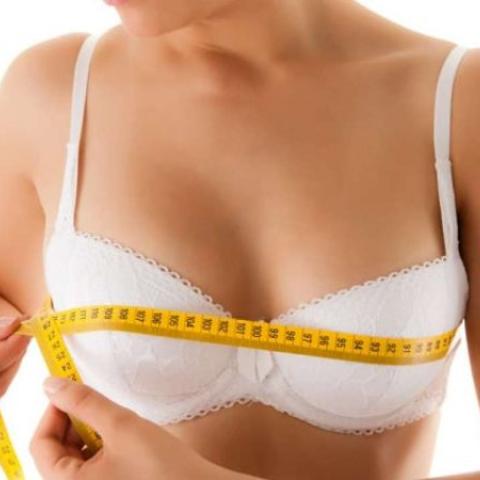Breast Reduction Procedure | Body Aesthetics

BREAST REDUCTION PROCEDURE
Overview
What is breast reduction surgery?
Plastic surgeons have perfected breast reduction techniques to effectively remove excess tissue and skin to achieve a breast size in proportion with your body and to alleviate the discomfort associated with overly large breasts.
WHAT TO EXPECT
How is breast augmentation performed?
Breast reduction surgery involves removal of excess skin, fat and glandular tissue through incisions on your breasts. Excess fat may also be removed through liposuction along with various excision techniques used by cosmetic surgeons. If your breast size is due primarily to fatty tissue and excess skin is not an issue, liposuction alone may be used as the key technique for breast reduction.
Plastic Surgeons will determine the best technique to reduce the size of your breasts based on your individual condition, breast composition, amount of reduction desired and your personal preferences.
Techniques for reduction mammoplasty include:
Vertical Mammoplasty or “Short Scar” Breast Reduction
The short scar procedure uses an incision that circles the nipple/areola area and extends down vertically below the breast. This approach avoids making a horizontal incision beneath the breast, reducing the total length of scarring by 50 percent, offering a superior cosmetic result, and a rounder, more natural outcome. The best candidates for the short scar procedure are women who have moderately large breasts. Women with massive breasts are better candidates for the traditional reduction procedure.
Traditional Reduction Procedures
These procedures involve an inverted T or anchor-shaped incision that extends vertically down the middle of the breast and horizontally along the underside of the breast, or a keyhole or racquet-shaped pattern with an incision around the areola and vertically down to the breast crease. This type of breast reduction procedure elevates the nipple to a more normal location, reduces volume and improves contour while usually preserving breast sensation.
HOW TO PREPARE
Am I a candidate for breast reduction surgery?
Breast reduction, or reduction mammoplasty, is a safe and effective option for women with large, heavy breasts. Women with large breasts may not only be dissatisfied with their body image, but also experience physical pain and discomfort, including back or shoulder pain in addition to suffering from skin irritation, bra strap indentations, concerns with posture, and limitations with physical exercise.
The best candidates for breast reduction surgery include:
- Women whose breasts are fully developed and breasts are enlarged (generally, a size D or larger)
- Healthy women who do not have a life-threatening illness or medical conditions that can impair healing
- Non-smokers (smoking may delay healing and increase the risk of complications).
- A consultation with a cosmetic surgeon is the first step to learn if you are a candidate for the procedure. Our Plastic Surgeons can explain how a reduction mammoplasty can improve the appearance of your breasts and relieve pain, discomfort and any associated symptoms you may have resulting from large, pendulous breasts.
How do I prepare for breast reduction surgery?
Preparation for your breast reduction surgery includes:
- Evaluation of your general health and any pre-existing health conditions or risk factors
- Examination of your breasts, and possible detailed measurements of their size and shape, skin quality, placement of your nipples and areolas
- Taking photographs of your breasts for your medical record
- Discussing your options and recommending a course of treatment
- Discussing likely outcomes of your procedure and any risks or potential complications
- Discussing the use of anesthesia during your procedure
The success and safety of your breast reduction procedure depends on you being completely open and honest during your consultation. Being able to discuss why you want the surgery, your expectations and desired outcomes, along with a thorough medical evaluation will help lead to the best end result.
RESULTS
What results can I expect?
- Breast reduction surgery is usually performed as an outpatient procedure. If this is the case, be certain to plan for someone to drive you home after surgery and stay with you at least the first night following surgery.
- When your procedure is complete, dressings or bandages will be applied to the incisions. You may also wear a support bra at home to minimize swelling and support the breasts as they heal.
- A small, thin tube may be temporarily placed under the skin to drain any excess blood or fluid that may collect at the incision sites.
- Your cosmetic surgeon will give you specific instructions for reduction mammoplasty recovery that may include:
- How to care for your breasts following the surgery,
- Medications to apply or take orally to aid healing and reduce the risk of infection
- Specific concerns to look for at the surgical site or in your general health, and when to schedule your follow up appointment.
What results can I expect?
The results of your breast reduction surgery will be long-lasting. Your new breast size should help relieve pain and physical limitations you experienced prior to surgery in addition to enhancing your self-image and confidence. View our breast reduction surgery before and after photos to see results from actual patients.
Breast reduction cannot, however, stop the natural effects over time that can cause your breasts to change due to aging, weight fluctuations, hormonal factors and gravity.
Is breast reduction surgery safe?
All surgical procedures carry some risk. Although rare, possible risks associated with breast reduction surgery include:
- Bleeding and infection
- Unevenly positioned nipples
- Partial or complete loss of sensation in the nipples
- Tissue or nipple loss
- Possible loss of the ability to breastfeed (due to the removal of milk ducts)
- Women who smoke are at a higher risk for all complications. Poor healing and wider scars are also more common in smokers.
